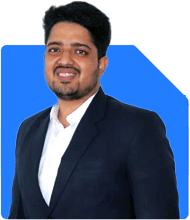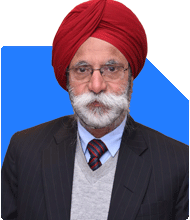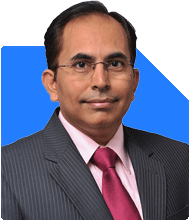Dear Sir,
I am 46 years IT professional currently working and having below investments:
PPF - 9 Lacs
Mutual Fund - 26 Lacs
Fixed Deposit - 42 Lacs
PF - 25 Lacs
House (Inherited) - 75 Lacs
House (Own) - 2 CR (No home Loan)
Monthly Take Home Salary (Post Taxes) - 1,10,000 INR
Monthly SIP - 65000 INR
Monthly expenses - 50,000 INR (School Fees, Household expenses etc...)
I have daughter who is 10 Years old. Need to plan for her studies (Graduation and Post Graduation), as well as plan for my early retirement (Age: 50 Years).
Corpus Required - 2.5 CR
Can you please guide me how I can plan for same.
Ans: First, congratulations on building a solid financial foundation. You’ve accumulated a mix of assets across PPF, mutual funds, fixed deposits, and provident funds. You also own two houses, one inherited and one purchased. Your take-home salary is Rs 1.1 lakh, and you invest Rs 65,000 in SIPs monthly while managing expenses of Rs 50,000. Planning early retirement and your daughter’s education will require careful financial management.
Let’s evaluate your current investments and how they align with your goals.
Financial Goals: Early Retirement and Education Planning
You aim to retire at 50, which is four years away. You also want to fund your daughter’s education for both graduation and post-graduation. These are your two key financial goals.
To achieve this, your investment strategy must focus on:
Building a retirement corpus of Rs 2.5 crore
Ensuring a separate education corpus for your daughter
Let’s break this down.
Evaluating Your Current Investments
Public Provident Fund (PPF)
You have Rs 9 lakhs in PPF, a safe investment with steady returns. This fund should continue as part of your portfolio, providing a stable, risk-free component.
However, PPF alone may not offer the growth you need for retirement or education. It’s a good safety net, but you need more aggressive growth elsewhere.
Mutual Funds (Rs 26 Lakhs)
Mutual funds are a critical part of your retirement and education plan. You already have Rs 26 lakhs invested here, which shows a balanced approach. However, it’s essential to review the types of mutual funds you’re investing in.
For long-term goals, actively managed funds in large-cap or multi-cap categories will help. These funds can provide growth while balancing risk.
Avoid direct funds and index funds, as they may not provide the needed active management or potential growth required for a shorter retirement horizon.
Fixed Deposit (Rs 42 Lakhs)
Fixed deposits offer safety but low returns compared to inflation. Rs 42 lakhs is a significant portion of your portfolio in FDs. Over time, this may not keep up with inflation, especially for long-term goals like education and retirement.
Consider reallocating some of this money into more growth-oriented assets like mutual funds or balanced debt-equity investments. This will help your money grow faster while still maintaining some safety.
Provident Fund (Rs 25 Lakhs)
Provident Fund is a stable, long-term investment. The Rs 25 lakhs you’ve accumulated here will provide additional security. However, like PPF, it won’t be enough to meet your retirement goals due to its conservative nature.
This fund should remain a part of your retirement plan, but you’ll need to supplement it with more aggressive growth strategies.
Real Estate (Inherited House and Own House)
You have two houses—one inherited and one you’ve purchased. While these are valuable assets, real estate is not liquid. Selling these homes may not always be feasible if you need funds urgently.
Instead of depending on real estate for retirement, focus on liquid investments that can be converted into regular income when required.
Structuring Your Investments for Early Retirement
To retire by 50, you need to create a solid corpus of Rs 2.5 crore in the next four years. With your current investments and SIPs, you are on the right path, but some adjustments can help ensure you meet your goals.
Steps to Achieve Early Retirement:
Increase SIP Allocation: Currently, you’re investing Rs 65,000 per month in SIPs. This is a good start, but if possible, increase this amount. Given your monthly take-home salary, you may be able to contribute more toward your retirement corpus.
Shift Fixed Deposits to Higher Growth Investments: As mentioned earlier, Rs 42 lakhs in FDs is too conservative for your goals. Consider transferring some of this into mutual funds, especially large-cap and multi-cap funds, for better returns. You can allocate part of it to debt funds for stability and the rest to equity for growth.
Balanced Asset Allocation: As you approach retirement, aim for a 60-40 or 70-30 equity-to-debt ratio. This will give you the growth needed to meet your corpus goal while also protecting your capital.
Systematic Withdrawal Plan (SWP): Post-retirement, consider using an SWP from mutual funds to generate regular income. This will ensure that your money continues to grow while providing monthly income to cover expenses.
Healthcare and Emergency Fund: Make sure to have a contingency fund and health insurance. Medical expenses can increase with age, so having a separate emergency fund will protect your retirement corpus.
Planning for Your Daughter’s Education
Your daughter is 10 years old, so her graduation and post-graduation costs will arise in the next 8-12 years. It’s crucial to build a separate education fund so that you don’t dip into your retirement savings.
Steps to Achieve Education Goals:
Create a Separate Education Fund: Estimate the future cost of her education, accounting for inflation. Begin setting aside a portion of your investments specifically for this goal. Large-cap and hybrid mutual funds will provide a good mix of growth and stability.
Regular SIP for Education: Increase your SIP contribution or start a separate SIP dedicated to education. This will ensure you accumulate the required corpus by the time she reaches college.
Avoid Reliance on Real Estate: Selling property for education expenses can be risky. Instead, focus on building a liquid fund that can be easily accessed when required.
Managing Your Monthly Expenses
Your current monthly expenses are Rs 50,000, and your salary is Rs 1.1 lakh. You’re comfortably able to invest Rs 65,000 monthly in SIPs. However, when you retire, you’ll need to generate enough monthly income to cover these expenses.
Steps to Manage Retirement Expenses:
Inflation-Adjusted Expenses: Account for inflation in your retirement planning. Rs 50,000 monthly expenses today could double in 15-20 years. Your retirement corpus should generate enough to cover these increased costs.
Sustainable Withdrawal Rate: Plan a safe withdrawal rate from your corpus. Typically, a 3-4% annual withdrawal rate ensures that your corpus lasts throughout retirement.
Emergency Fund: Maintain an emergency fund that can cover at least 12 months of expenses. This provides a cushion for any unforeseen financial needs.
Tax Considerations
Post-retirement, managing taxes will be important. You need to structure your investments in a tax-efficient way to maximise your returns and minimise tax liabilities.
Steps for Tax Efficiency:
Invest in Tax-Saving Mutual Funds: Some mutual funds offer tax benefits under Section 80C. Although you are close to retirement, a portion of your investments can still be directed here to reduce your tax burden.
Provident Fund and PPF: Both PF and PPF offer tax-free interest. These should remain part of your portfolio for tax-efficient growth.
Capital Gains Management: Plan the sale of mutual funds and other assets in a tax-efficient way to minimise capital gains tax.
Final Insights
Your current financial situation is strong, with a diversified portfolio across multiple asset classes. However, to meet your goal of retiring by 50 with a Rs 2.5 crore corpus, you’ll need to make some adjustments. These include reallocating funds from FDs to mutual funds for better growth, increasing your SIPs if possible, and creating a separate education fund for your daughter.
It’s also important to have a well-balanced portfolio that provides growth, stability, and liquidity. Regular reviews of your investments and tax planning will ensure that you stay on track.
Best Regards,
K. Ramalingam, MBA, CFP,
Chief Financial Planner,
www.holisticinvestment.in
https://www.youtube.com/@HolisticInvestment














.jpg)














